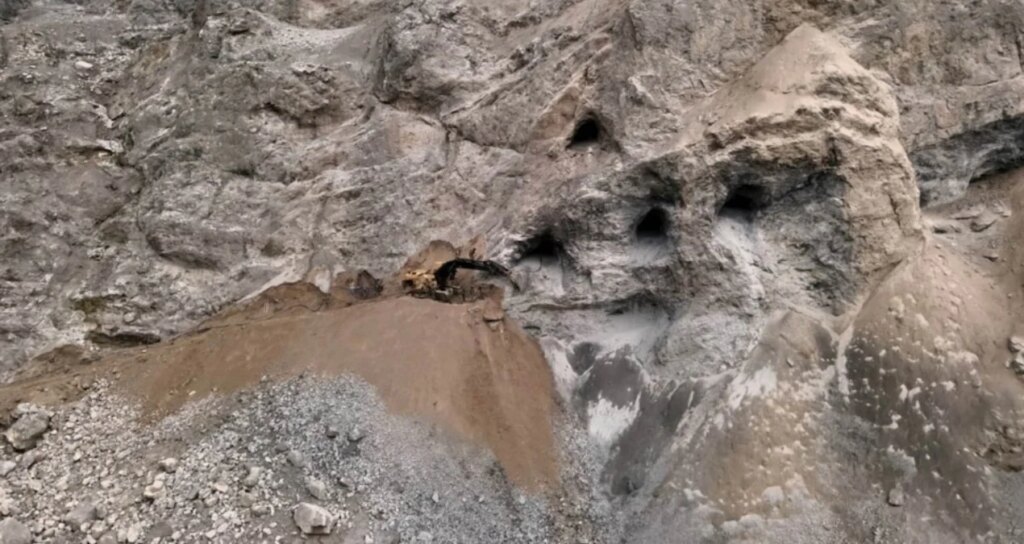In a poignant revelation during the recent discussions on the Ministry of National Defense’s budget, Minister Yaşar Güler disclosed critical information regarding First Lieutenant Melih Bozkurt, who was martyred during the Claw Lock Operation. His body has remained unaccounted for more than 3.5 years, producing lingering uncertainty among his family and the public. Minister Güler provided details about the circumstances surrounding Bozkurt’s martyrdom and the tragic loss of 12 soldiers who were part of the search operations that followed his disappearance.
| Article Subheadings |
|---|
| 1) Circumstances of Lieutenant Bozkurt’s Martyrdom |
| 2) The Discovery of Human Remains |
| 3) The Tragedy of the Cave Search |
| 4) The Background of First Lieutenant Bozkurt |
| 5) Implications for Military Operations |
Circumstances of Lieutenant Bozkurt’s Martyrdom
First Lieutenant Melih Bozkurt, whose martyrdom occurred on May 28, 2022, during the Claw Lock Operation, died due to an improvised explosive device (IED) planted by terrorists. The operation aimed at neutralizing threats in a cave located in a mountainous area, which was reportedly being used by insurgents for shelter and strategic planning. Claims indicate that amid a search operation that was conducted in response to intelligence received from a captured terrorist, Lieutenant Bozkurt was caught in the deadly blast.
Minister Güler elaborated on the events leading to Bozkurt’s martyrdom during a session of the Turkish Grand National Assembly, where he described the dangerous circumstances that unfolded during the search. Despite the harrowing nature of the operation, the military remains committed to prioritizing its objectives in combating terrorism.
The Discovery of Human Remains
In a surprising turn of events, Minister Güler announced that a mass grave containing approximately 4,500 human bones was found in the very cave where Lieutenant Bozkurt met his fate. The forensic examination conducted in Istanbul determined that none of these remains belonged to Lieutenant Bozkurt. This discovery raised questions and concerns regarding the extent of activity in the area and the execution of operations by terrorist organizations.
The revelation of such a significant volume of human remains not only speaks to the historical context of the conflict but also to the atrocities committed in the region. The presence of these bones underlines the urgency of relocating and rehabilitating areas affected by historical conflict to prevent further loss.
The Tragedy of the Cave Search
Further complicating the mission amidst challenging terrain, a total of 12 soldiers tragically lost their lives due to methane poisoning during the cave search conducted from July 1-5, 2022. Reportedly, two soldiers initially entered the cave, and when they failed to emerge, a rescue operation was launched involving 17 personnel. Unfortunately, the team’s efforts were thwarted, and many succumbed to the poisonous atmosphere of the cave.
Minister Güler highlighted the government’s determination to analyze the circumstances surrounding the cave search to better understand the risks posed by such missions. Despite the extensive obstacles that military personnel face, the government continues to regard their safety and the success of anti-terror operations as paramount.
The Background of First Lieutenant Bozkurt
First Lieutenant Melih Bozkurt had a unique background, graduating from Ankara Hacı Bayram Veli University with a specialization in tourism management before commissioning into the Turkish Armed Forces. His transition from a tourism professional to a military officer illustrates his dedication and sense of duty towards the country.
Lieutenant Bozkurt was passionate about serving his nation, and his commitment was ultimately sealed with his sacrifice during a perilous operation. His family, who continues to seek closure about his disappearance, has been unwavering in their demand for answers regarding the events that led to his martyrdom.
Implications for Military Operations
The ongoing investigations and findings from these tragic events have led military officials to rethink operational strategies in mountainous and cave-dense areas. The recovery of Lieutenant Bozkurt’s gear, including his mobile phone, has raised questions about how the military could enhance their search protocols to ensure personnel safety and effectiveness in high-risk environments.
In the wake of these tragedies, there is an increasing call for advancements in technology to aid in search and rescue missions, particularly in terms of detecting hazardous gases and improving communication systems in challenging terrains.
| No. | Key Points |
|---|---|
| 1 | First Lieutenant Melih Bozkurt was martyred on May 28, 2022, during the Claw Lock Operation. |
| 2 | A mass grave containing approximately 4,500 human remains was discovered in the cave where Bozkurt was killed. |
| 3 | Twelve soldiers lost their lives due to methane poisoning during subsequent search operations. |
| 4 | Bozkurt transitioned from a tourism professional to a military officer, showcasing his dedication to national service. |
| 5 | The military is reevaluating operational strategies based on lessons learned from these tragic events. |
Summary
The recent disclosures surrounding First Lieutenant Melih Bozkurt and the tragic loss of soldiers during search operations underscore the profound risks shouldered by military personnel in combating terrorism. The findings also emphasize the need for improved operational protocols and strategies to ensure personnel safety. The ongoing effort to recover Lt. Bozkurt’s body reflects both the valor of the armed forces and the unresolved pain experienced by families of fallen soldiers.
Frequently Asked Questions
Question: What led to the martyrdom of Lieutenant Bozkurt?
Lieutenant Bozkurt was martyred during a military operation when an improvised explosive device (IED) detonated in the cave where he was searching for terrorists.
Question: What was discovered in the cave where Bozkurt was killed?
A mass grave containing approximately 4,500 human bones was discovered in the cave. Forensic tests revealed that none of the remains belonged to Lieutenant Bozkurt.
Question: What measures are being taken to improve military operations following these events?
The military is re-evaluating operational strategies to enhance the safety of personnel, particularly focusing on detecting hazardous gases and improving communication in challenging environments.
